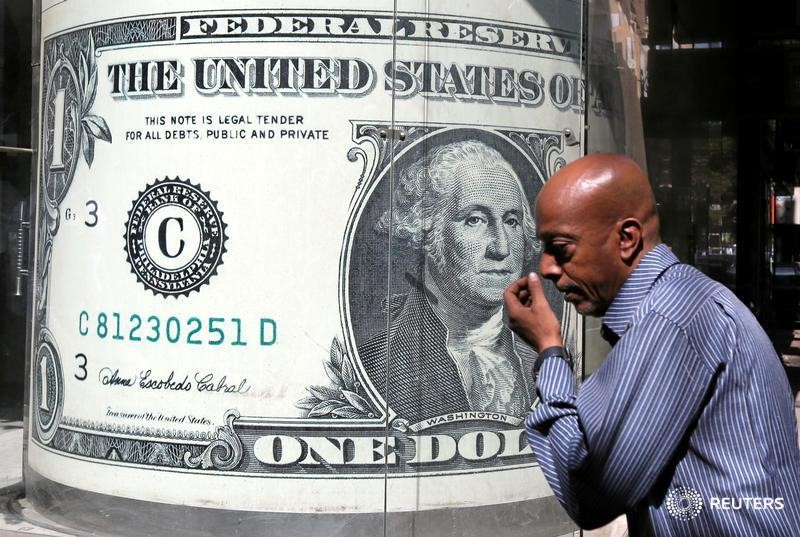Investing.com - The dollar gained slightly against the yen on Friday in early Asia with several markets closed in the region and to the Middle Est for the the Muslim festival of Eid and a slate of PMIs ahead,
The U.S. dollar index, which measures the greenback’s strength against a trade-weighted basket of six major currencies, was last quoted down 0.27% to 92.59.
USD/JPY changed hands at 110.02, up 0.04%, while AUD/USD fell 0.03% to 0.7944.
In Asia, another busy day of data with the AIG manufacturing index from Australia for August due, with the July reading at 56.0 and the Japan manufacturing PMI for August with 52.8 expected.
Then in China, the Caixin manufacturing PMI for August is die with a reading of 50.9 seen.
Overnight, the dollar came under pressure on Thursday after data showed the pace of inflation remained subdued while weakness in the U.S. housing sector continued, curbing investor expectations of a rate hike later this year.
The dollar pared early session gains weighed by a raft of mixed economic reports, as consumer spending and housing data fell short of expectations while inflation remained well below the Federal Reserve’s target rate.
The trend of slowing sales of US homes continued in July as tight supply of housing weighed on the pace of new listings available for sale.
Pending home sales slid 0.8% in July from the previous month when they rose 1.3%, the National Association of Relators said on Thursday. That missed economists’ expectations for a 0.5% rise.
Meanwhile, consumer spending, which accounts for more than two-thirds of U.S. economic activity, increased 0.3%, the Commerce Department said on Thursday, falling short of expectations of a 0.4% increase.
Inflation and jobs data, pointed to continuing US labor market strength while the pace of inflation remained subdued, increasing at its slowest pace in nearly two-years.
Initial claims for state unemployment benefits rose 1,000 to a seasonally adjusted 235,000 for the week ended Aug. 25, the Labor Department said. That beat economists’ forecasts of a 2,000 increase.
In the 12 months through July, the core PCE price index increased 1.4% after advancing 1.5% in June. That was the smallest year-on-year increase since December 2015.
The slew of economic reports comes ahead nonfarm payrolls data due Friday.
The tick lower in the greenback, embolden the euro to bounce off session lows, following earlier data showing eurozone inflation topped expectations.
